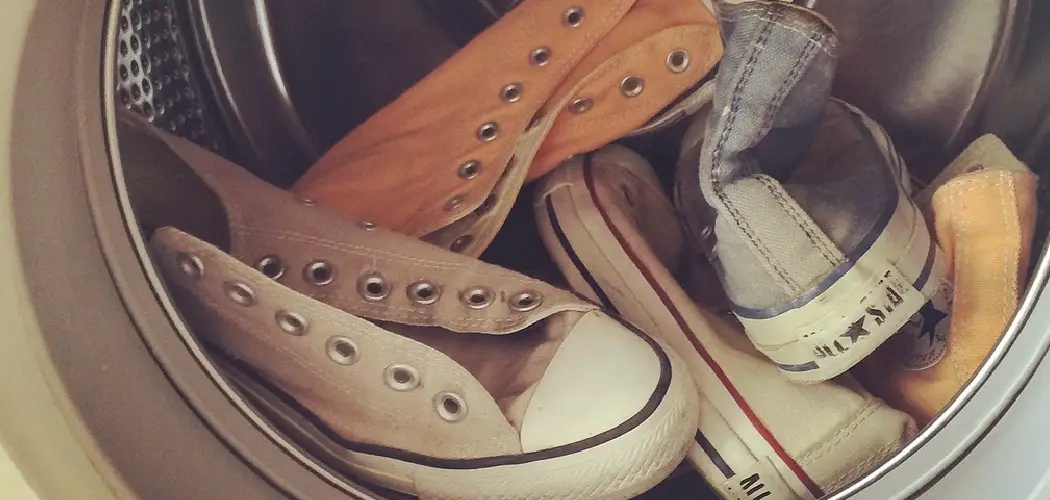Washing shoes in the washing machine can be a convenient and effective way to clean them without much hassle. Whether you’re dealing with muddy sneakers, smelly gym shoes, or casual footwear in need of a refresh, using a washer can save time and effort. However, it’s important to properly prepare and execute this process to avoid damaging your shoes or the appliance. This guide will walk you through how to put shoes in washer safely and effectively.
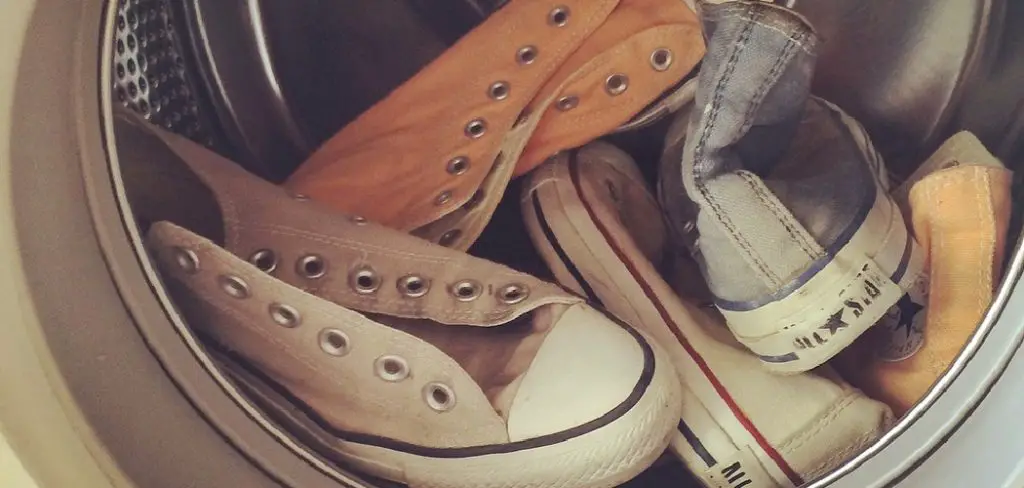
The Idea of Washing Shoes in The Washer
Many people initially find the idea of washing shoes in a washing machine daunting, worrying about potential damage to their footwear or their appliance. However, with proper precautions, this method can be quite beneficial and efficient. It allows thorough cleaning and can revive shoes that seem beyond salvaging, all while freeing you from the tedious task of handwashing.
Additionally, using a washing machine can be more environmentally friendly compared to excessive scrubbing and rinsing, as it conserves water and utilizes less detergent. It’s just crucial to follow best practices, like removing any excess dirt beforehand, using a gentle cycle, and air-drying the shoes, to ensure optimal results.
Can You Put Shoes in the Washer?
Yes, you can put shoes in the washer, but it’s essential to check the material and construction of your shoes first. Generally, sneakers and cloth-based casual shoes are suitable for machine washing. However, shoes made from delicate materials like leather, suede, or those with intricate embellishments should not be placed in the washing machine as it can cause damage.
Always refer to the manufacturer’s care instructions if in doubt. For shoes that are washer-safe, properly preparing them for washing—such as removing laces and insoles and placing them in a mesh laundry bag—can help protect both the shoes and the machine itself.
10 Methods How to Put Shoes in Washer
1. Check Shoe Labels and Materials
Before you toss your shoes into the washing machine, it’s critical to check the labels and assess the materials. Not all shoes are suitable for machine washing. For example, leather and suede shoes should never go in the washer as they can be damaged by water and agitation. On the other hand, canvas, nylon, polyester, and synthetic materials tend to handle machine washing better.
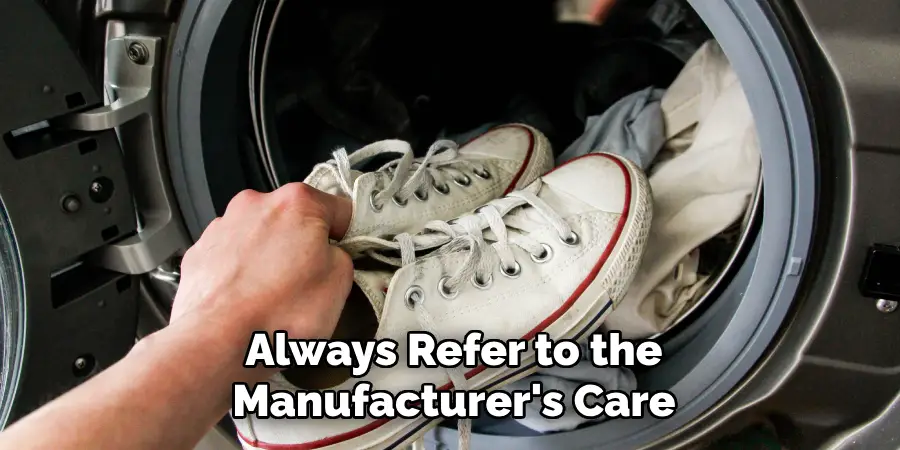
Look for cleaning instructions provided by the manufacturer, often located on the shoe’s label, to determine if the shoes are safe to wash in a machine. Following these guidelines helps ensure that your shoes remain in good condition after a wash.
2. Remove Insoles and Laces
Shoelaces and insoles should always be removed before placing shoes in the washing machine. Laces can get tangled in the machine’s drum, and insoles may absorb too much water, leading to prolonged drying times and even damage. It’s best to clean laces and insoles separately by hand. For laces, you can soak them in warm, soapy water, scrubbing gently to remove dirt and stains. Insoles should also be cleaned with a cloth and mild detergent. If your insoles are particularly smelly, sprinkling some baking soda on them can help eliminate odors. Once cleaned, let both the laces and insoles air dry.
3. Pre-Treat Stains and Excess Dirt
Before putting your shoes into the washing machine, pre-treat any visible stains or remove excess dirt. Use a soft brush or an old toothbrush to scrub off dried mud, grass, or dirt. You can also apply a stain remover or a small amount of laundry detergent directly to the affected areas. Gently work the detergent into the fabric with a brush or cloth and let it sit for about 10 to 15 minutes before washing. Pre-treating ensures that stubborn stains are dealt with more effectively during the washing process, resulting in cleaner shoes.
4. Use a Mesh Laundry Bag
Placing your shoes in a mesh laundry bag is an essential step to protect both your shoes and your washing machine. The bag prevents your shoes from banging around the drum, which could damage the shoes or the machine. It also helps minimize wear and tear on the shoes caused by excessive friction.
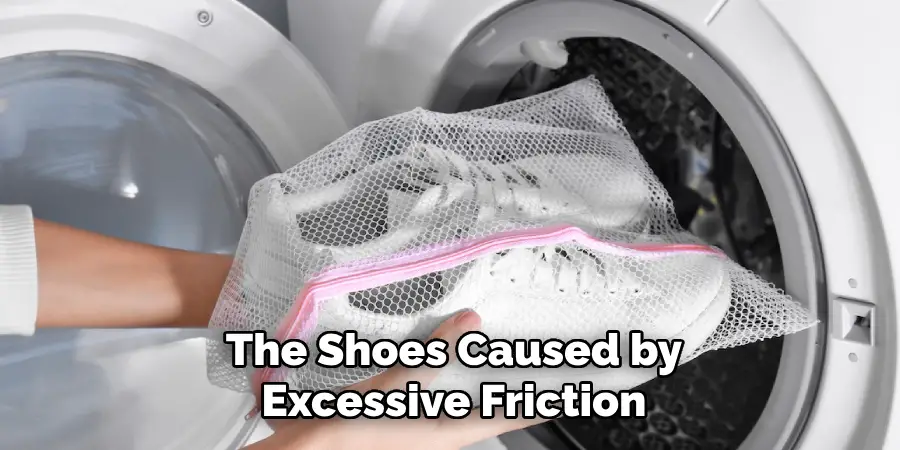
If you don’t have a mesh bag, you can use a pillowcase as an alternative, tying the open end securely to prevent the shoes from escaping. This extra layer of protection is especially important for shoes with delicate materials, such as lightweight runners or shoes with intricate detailing.
5. Add Towels to Balance the Load
When washing shoes, it’s important to balance the load inside the washing machine. Shoes can cause the drum to become unbalanced, which may result in excessive noise or damage to the machine. To counteract this, add a few old towels to the load. The towels will act as padding, softening the impact of the shoes hitting the drum and helping to balance the weight distribution. Make sure the towels are similar in color to the shoes to avoid any color transfer during the wash. This method not only protects your washing machine but also ensures a more effective cleaning process for your shoes.
6. Choose the Right Washing Cycle
Selecting the correct washing cycle is crucial for safely washing shoes in the machine. A gentle cycle is typically the best choice for shoes, as it minimizes agitation and reduces the risk of damaging the fabric or structure of the shoes. Most washing machines have a “delicate” or “gentle” setting, which is ideal for this purpose. If your machine offers a lower spin speed or a short cycle option, that’s even better. High-speed spins and long cycles can be too harsh on the shoes, especially if they are lightweight or have glued-on components that could be loosened by excessive agitation.
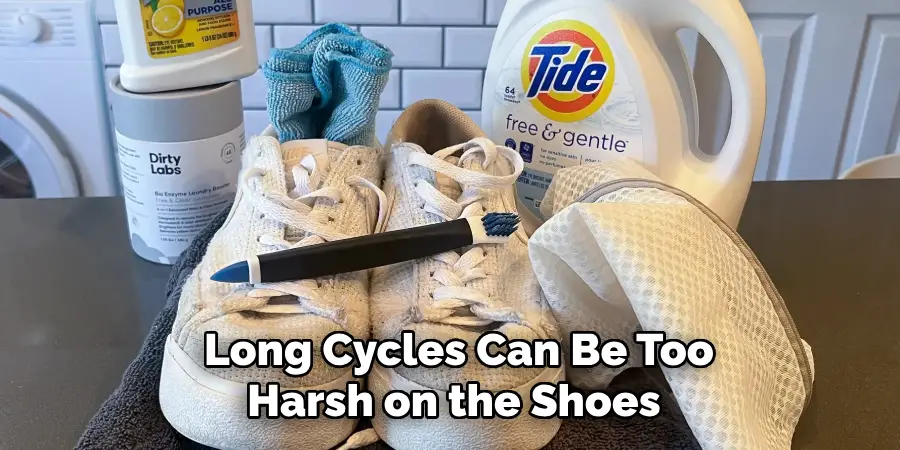
7. Use Cold Water and Mild Detergent
When washing shoes, always opt for cold water. Hot water can cause certain materials to warp, shrink, or lose their shape. Cold water is gentle on fabrics and helps maintain the integrity of the glue that holds many shoes together. Additionally, choose a mild, liquid detergent rather than powder, as powdered detergent may not dissolve properly and could leave residue on the shoes. Avoid using bleach or harsh chemicals, as they can weaken fabrics and discolor certain materials. A small amount of detergent is enough to clean the shoes without overwhelming the delicate fibers.
8. Avoid the Dryer: Air Dry Instead
Once the washing cycle is complete, resist the temptation to throw your shoes into the dryer. The heat from the dryer can warp or shrink the materials and degrade the glue that holds the shoe components together. Instead, allow your shoes to air dry. To help them maintain their shape, stuff the shoes with newspaper, paper towels, or a clean cloth. This not only helps retain the structure of the shoes but also absorbs excess moisture from the inside. Place the shoes in a well-ventilated area, avoiding direct sunlight, as it can fade colors and damage certain materials.
9. Reinsert Laces and Insoles Only After They’re Completely Dry
After your shoes have air-dried, ensure that both the shoes and the insoles are completely dry before reassembling them. If the insoles or the inside of the shoes are still damp, it can lead to the growth of mold or a musty smell. Once fully dry, reinsert the insoles and lace up your shoes. At this point, you can also relace them in a new way if you’re looking to give your shoes a refreshed look. Making sure everything is dry before putting the shoes back together will keep them smelling fresh and prevent any potential damage to the materials.
10. Maintain a Regular Cleaning Routine
Washing your shoes in the washing machine shouldn’t be a frequent activity, as the wear and tear from machine washing can shorten the lifespan of your footwear. However, maintaining a regular cleaning routine can minimize the need for deep cleaning. Regularly wiping down your shoes with a damp cloth, brushing away dirt after use, and spot-treating stains as soon as they appear can keep your shoes looking their best for longer.
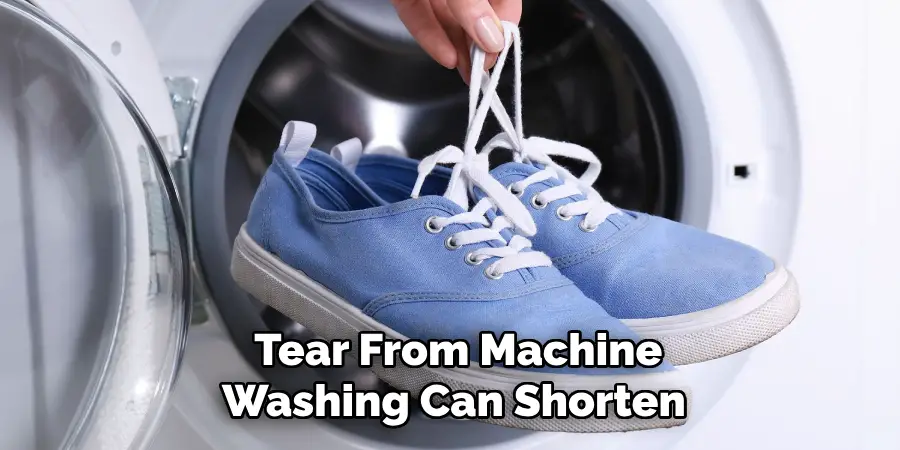
For particularly delicate or expensive shoes, consider using specialized cleaning kits designed for sneakers or leather, which can help you keep them clean without the need for machine washing.
Conclusion
By following these steps, you can keep your shoes looking pristine while extending their lifespan. Machine washing shoes, while convenient, should be approached with care to ensure that no damage occurs during the cleaning process. Remember that prevention is key; regular upkeep and immediate attention to dirt and stains can minimize the need for more aggressive washing methods. Whether you’re dealing with a pair of everyday sneakers or delicate running shoes, these guidelines will help maintain their condition and performance over time. Thanks for reading, and we hope this has given you some inspiration on how to put shoes in washer!

